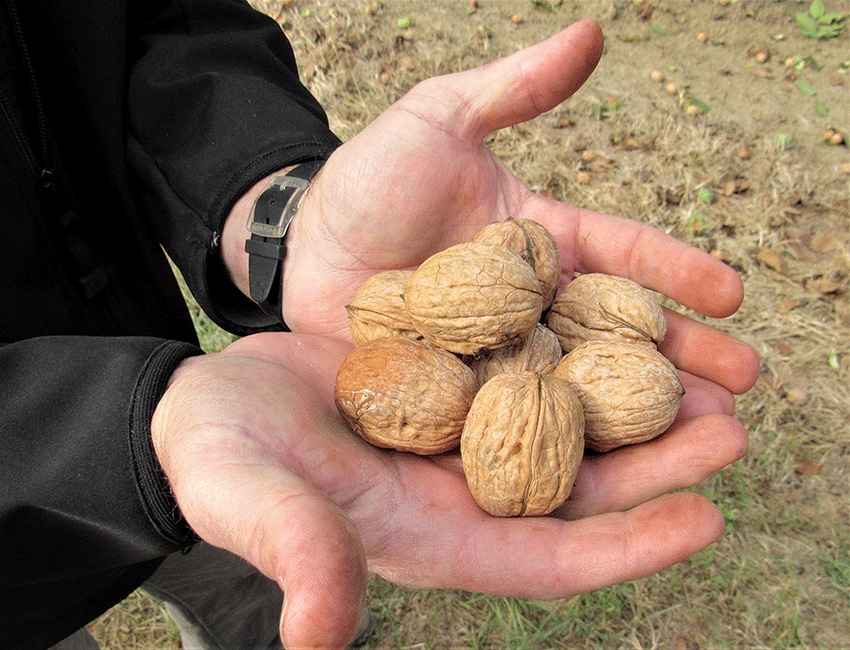
Walnut yields this fall came in lighter than expected, causing growers to doubt whether their production will top the 2016 crop of 689,000 tons that was predicted earlier in the season.
At Lindauer River Ranch at Red Bluff, Calif., one young orchard had only about half the Chandler walnuts that farm manager Michael Vasey had anticipated. Overall, his entire crop was light, he says. “We thought it was going to be like last year, but as it turned out it was a little bit lighter,” he says. “I’m hearing that from other growers, too.”
Some farms may end up with as much as 25 percent fewer Chandlers than projected, Vasey says.
Luke Milliron, University of California Cooperative Extension orchard systems advisor based at Oroville, is hearing similar reports from area growers. In several of his field trials, yields were low and many nuts came in small, he says.
LONG BLOSSOM PERIOD
While the cause is hard to pinpoint, he suspects the yield loss was largely the result of a long, staggered bloom period in northern areas.
“I think that the really long bloom timing is part of the issue,” he says.
Rick Buchner, UCCE advisor emeritus based at Red Bluff, says yields and sizes are down in his area, too. I’ve never seen so many peewees on the ground.”
In August, the National Agricultural Statistics Service office at Sacramento predicted a 690,000 ton crop, which would be 10 percent higher than the 2017 crop. The estimate was based on a random survey of 1,452 walnut trees conducted in August.
NASS officials reasoned that late spring rains provided cooler conditions, which increased kernel size and helped quality. The agency found an average nut set of 1,176 per tree, up 3 percent from the 2017 average of 1,141, according to a news release.
All of the surveyors’ sizing measurements were below last year’s levels. However, the agency noted that insect pressure was reported to be down from last year, and growers were quick to apply sunburn preventive materials during the summer heat waves.
Growers didn’t question NASS’ estimate when it was released. But when they started shaking trees, they found that yields were lower. “We think the NASS estimate was a little high,” Vasey says.
SMOKE NOT A FACTOR
The walnut harvest came as the almond harvest was delayed in some areas because of smoke from nearby wildfires. But smoke wasn’t as much a factor in walnut orchards — if anything, Milliron says, it helped improve quality by preventing sunburn and reducing water stress by lowering temperatures.
“In smoky summers, you can have decent quality if you don’t end up over-irrigating. I feel a lot of our problems in walnuts go back to over-irrigating. It’s easier to over-irrigate when water demand is lower during overcast, smoky days. But those overcast, smoky days should help by reducing sunburn.”
Vasey thinks the smoke may have saved some of his trees from sunburn.
“I don’t think it really had a negative impact on the trees.” While nut size hasn’t been stellar, overall quality and color are “quite good,” Vasey says.
With a big crop projected, it may take a while before prices paid to growers begin to reflect the actual nut supply. Last year’s payments for Chandlers averaged $1.30 per pound, but this year Vasey says he has heard that growers are being paid as low as 65 cents per pound. Prices peaked a few years ago at $2.05.
“It’s moving all the time, though,” he says. “What my handler told me is that it will be 20 percent to 30 percent lower than last year.”
About the Author(s)
You May Also Like






